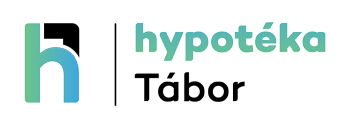How to Rank for a Keyword 8 Steps
Off-Page SEO: Strategies & Best Practices for Off-Site SEO
25. 6. 2025BC Game Latest Updates Insights and Innovations in the Gaming Space
25. 6. 2025The click-through rate (CTR) represents the SEO Anomaly percentage of users who click on your site after it appears in their search results. A high CTR indicates that your website listing is attractive and relevant to users. A longer dwell time suggests that users find your content valuable and engaging, which is a positive sign to search engines. Implementing these on-page optimization best practices can improve your website’s search engine visibility and provide a better user experience. Those ranking factors form the basis for successful SEO strategies.
That process is known as ranking, or the ordering of search results by most relevant to least relevant to a particular query. This example excludes all search engines from indexing the page and from following any on-page links. If you want to exclude multiple crawlers, like googlebot and bing for example, it’s okay to use multiple robot exclusion tags. Crawling is the discovery process in which search engines send out a team of robots (known as crawlers or spiders) to find new and updated content.
Transactional Search Intent
This declutters the results and helps people locate relevant information more easily. However, the search algorithm isn’t the only element to consider when producing content. No matter which method you use, however, the content on your site must be the same on both desktop and mobile devices. Each version must have the same title tags and meta descriptions, too. Average engagement time reflects how long visitors were actively engaged with the content on your site. Google Business Manager, formerly Google My Business, is how you manage your Google Business Profile.
- Search engines view these links as a vote of confidence, signaling that your content is authoritative and trustworthy.
- On-page signals are also growing in their perceived importance for local SEO.
- Google is not going to outright claim that links are a surefire ranking factor if they can be so easily manipulated.
- Observe how people use and interact with your website by looking at data about their actions and behaviors.
- With this background, you’re ready to dig into top Google ranking factors.
responses to “10 Game-Changing SEO Ranking Factors for 2025”
This will make them more likely to click your listing and learn more, and can give them a better sense of whether they want to become a customer. There are many channels available, and selecting the ones that make the most sense for your needs and goals takes time and research. If you want to rank, you’ve got to roll up your sleeves and tell people about it. Assume Google ignores 50% of your links, and only 50% of your links are good. In reality, we don’t know how many links Google ignores, but it’s good to assume this regardless.
For instance, concerns about mass-produced content a decade ago led Google to refine its systems to better reward quality content, rather than imposing bans based on the method of creation. Keyword research is a critical first step in any SEO strategy, helping you understand what your target audience is searching for online. The right keywords can connect you to your audience by aligning your content with their needs and search queries.
Keep in mind, that the main goal of YouTube is to keep users on the YouTube site as long as possible. All videos that make their contribution in the form of a high Watch Time will be rewarded with a high ranking. Thanks to the YouTube Analytics function, you can see the data in real-time. Some places are more prominent in the offline world, and search results try to reflect this in local ranking. For example, famous museums, landmark hotels, or well-known store brands are also likely to be prominent in local search results. So if you launch a brand-new site, know that it will take time for your SEO efforts to kick in.
Content is key not just for ranking, but also for user experience and conversion. In fact, it’s smart to include variations of your main keyword in your content. Here are the most important ranking signals in Google’s algorithm right now (in 2022). In fact, webpages with fewer backlinks get much less organic traffic because they’re buried deep in the search results. No matter how optimized your webpage is, if your content is not valuable, then you can’t expect higher rankings. Some website owners may be tempted to optimize for every ranking factor when it comes to getting higher rankings.
Googlebot starts out by fetching a few web pages, and then follows the links on those webpages to find new URLs. Mastering on-page SEO is essential for improving your website’s visibility, driving targeted traffic, and ultimately boosting your online success. Since switching to mobile-first indexing in 2018, Google has prioritized sites optimized for mobile traffic, even for desktop search.
The better you optimize these elements, the higher your chance of being seen by potential visitors when they search for information related to what you offer. And you don’t need to remember 200+ ranking factors to grow your startup. Intrusive interstitials are pop-ups or other page elements obstructing a user’s view of the content. They make accessing the content hard for a mobile and desktop user. Linking to relevant content enhances user experience by providing deeper insights or complementary information.


